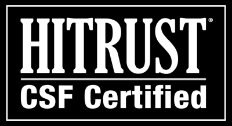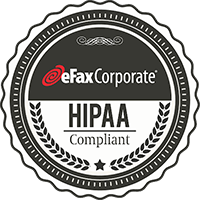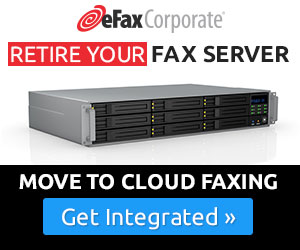Better, Faster & Safer Document-Sharing
Strategies for the Legal Industry
Consider a day in the life of a young lawyer. She heads to court after sending critical documents for a case to the court clerk who will only accept paperwork by fax.
Later in the day, she heads back to the office to review a pending contract. A senior partner has printed it out, marked it up and left it on her desk with his hand written comments. After adding her own edits, she’ll fax it to the opposing party for review, and then receive his comments back by fax so she can prepare the final version.
Before leaving the office for the day, she needs to securely send documents that contain sensitive case information and a client’s private data to one of her legal researchers. She faxes the package to ensure there’s no chance of hackers or the opposing attorney intercepting the information.
The legal industry is powered by paper. Individual cases can contain thousands of documents, and those documents are constantly changing hands between legal teams, lawyers and their clients, and legal firms and the courts. Faxing is the
preferred transmission method – it’s fast, it’s secure, and it’s the standard for the legal industry.
As a heavily regulated industry, one misstep or data breach can have disastrous consequences for law firms. Legal fines, audits, brand damage and worse.
Eighty percent of processes today are still paper-based, and for regulated industries like the legal field, protecting the information those documents contain is crucial. With established lawyers who are still most comfortable marking up documents by hand, faxes, and a continuing perception that faxing is the most secure way to share information, it remains a key component of the legal toolkit.
The question law firms have to answer is: Is your current approach to faxing the best one for your clients, for your team, and for your bottom line?
Faxing and the Billable Hour
For lawyers, maximizing your time during the day is critical to keeping up with mounting caseloads and hitting billable hour requirements.
While it’s important to exchange information quickly, get through complex research, or quickly get access to the latest documents, traditional faxing can be slow and add extra steps to an already packed day.
Traditional fax machine-based faxing is inefficient. Yet one recent poll on SpiceWorks of over fifteen hundred IT managers from around the country revealed that 62 percent still used a traditional fax in the office. And only 10% of respondents did not use fax at all.
Sending documents this way requires:
• Printing off a physical copy of the legal document
• Making whatever changes or updates are needed physically, with a pen
• Waiting for access to the fax machine
• Physically loading the document
• Standing around through the transmission
• Troubleshooting delayed transmissions
• Waiting for the delivery confirmation to print
• Filing the details so a record exists confirming the transmission
In other words, it can take 15 or 20 minutes or longer just to send a document – a task that could be completed in a single click with digital tools. Whether it’s you, your paralegal or legal assistant spending this time, it’s not helping you move cases forward or delivering the value your clients expect.
There are also potential security issues. When documents come in over a physical fax machine, they’re left sitting there until someone can pick them up. It’s possible that a key document could get misplaced or be given to the wrong person. Worse, confidential information could be exposed – from client’s social security numbers to highly sensitive intellectual property or criminal evidence associated with a case.
Court cases are often time-sensitive; a motion by the opposing attorney, a judgment or a late-breaking piece of evidence found during the discovery process can require a 180-degree pivot in your legal strategy. Time is of the essence, and not receiving a document the moment it arrives, or missing a filing deadline with the court, can be a significant setback for your team.
As a result, many law firms have invested in fax servers. Yet for an industry like legal, which is committed to keeping costs low, the IT overhead associated with maintaining a fax server isn’t cheap. Your IT staff needs to constantly troubleshoot it.
There’s also the cost of upgrades, service packs, and reconfiguring them – year after year. Replacing a failed multi-channel T1 fax modem board can cost your company five figures. After that investment is made, you’re stuck maintaining and building on that legacy investment – even if it’s your last piece of dedicated server hardware.
Many law firms are increasingly asking, “Rather than continuing to pour money into upgrading and maintaining our existing fax hardware and software infrastructure, is there a better way?” You probably suspect that better fax technology can support your team’s ability to maximize billable hours and minimize unnecessary expenses.
How can you continue to capture all the benefits of faxing, while speeding up the faxing process, improving security and cutting costs?
How Cloud Faxing Technology is Improving Legal Performance
Enter cloud faxing. Today, cloud faxing technologies are becoming increasingly popular with lawyers. In one study by the American Bar Association, half of those surveyed were using cloud- based faxing technologies. What are the benefits for law firms?
Reduced costs: Cloud faxing provides the enterprise scale of a fax server without the upfront capital investment costs. There’s no need to buy dedicated hardware or software, or pay for IT time to maintain an aging, unreliable infrastructure. And there are no monthly recurring costs for telecommunications lines.
Even better, cloud faxing provides tight cost controls. Pricing is tied to your usage, so you’re only paying for what you use. And everything’s included in the standard price so there are no cost surprises – ever. Keeping your overhead costs under control just became easier. And you will be able to easily track and allocate faxing expense, to the penny, for each fax sent or received.
Tighter security: While faxing over the public phone lines is secure, as we’ve established, there are big risks at both ends of the transactions when those faxes are printed out. When confidentiality and security are part of the premium your clients pay for, there’s no room for errors. From unattended faxes printing out and falling into the wrong hands to documents being stored on hardware that creates a long-term data risk, the potential issues with fax hardware are too high.
With cloud faxing, you know your law firm’s entire infrastructure will operate in compliance with current data security and privacy standards. You’ll have:
• Faxes sent and received from and to a designated email box.
• Complete physical control of data from end to end
• Full audit trails for when documents were sent, received and shared
• Have uniform policies in place that protect secure data, which align with the American Bar Association’s guidance
• Consistent compliance with any regulatory issues associated with your cases, including HIPAA, SOX, GLBA, PCI, etc.
Better processes: Do you remember the busy paralegal who is waiting several minutes just to send a lengthy document, only to have to file it later? With cloud faxing, it’s possible to send a document in seconds with just a few clicks.
Users attach documents to an email and it’s sent – fully encrypted – to keep data fully secure at all times. When you’re sending them and when they’re in your inbox, documents are protected.
Incoming faxes immediately come to your inbox as PDFs; your team is alerted the moment they arrive and can take action so client cases are never damaged by delays. Every minute is spent on valuable tasks that help you win cases which in turn increase your billable hours.
And let’s face it – it’s critical for your legal teams to have tools that make it easier to search and share documents. Finding one document among the thousands associated with a case can be challenging. With a simple keyword search, your team can find the incoming faxes they need and access complete audit trails associated with files without digging around in paper archives.
Bottom line:
• Cloud faxing is easy to roll out and scale across your law firm.
• It lets your legal team quickly and easily send faxes and access documents from anywhere, at any time, from the courtroom to the boardroom.
• It speeds up the data-transfer process associated with case documents, while ensuring maximum security.
• It affords better control of costs by replacing long term capital investment with usage pricing that is exactly matched to the number of faxes sent or received.
• It puts better tools in place to protect sensitive client information and stay in compliance with demanding regulatory standards.
eFax Corporate Secure Business Faxing
Whether your law firm is a one-person practice or employs thousands, eFax will let you safely and securely send and receive sensitive data to or from anyone, any time.
Our advanced TLS-encryption protects your data during transmission, while our 256-bit AES storage security technology keeps your data safe while at rest in your password-protected cloud storage account. Our security policies are compatible and compliant with the leading government and industry security and privacy standards such as HIPAA, SOX, GLBA, PCI-DSS and others.
Let eFax Corporate bring your law firm into the future and into compliance with current data-security and privacy standards. Contact eFax Corporate today to learn more about our efficient, cost-effective, and secure fax solutions that is used by half of the ALM top 100 law firms.











